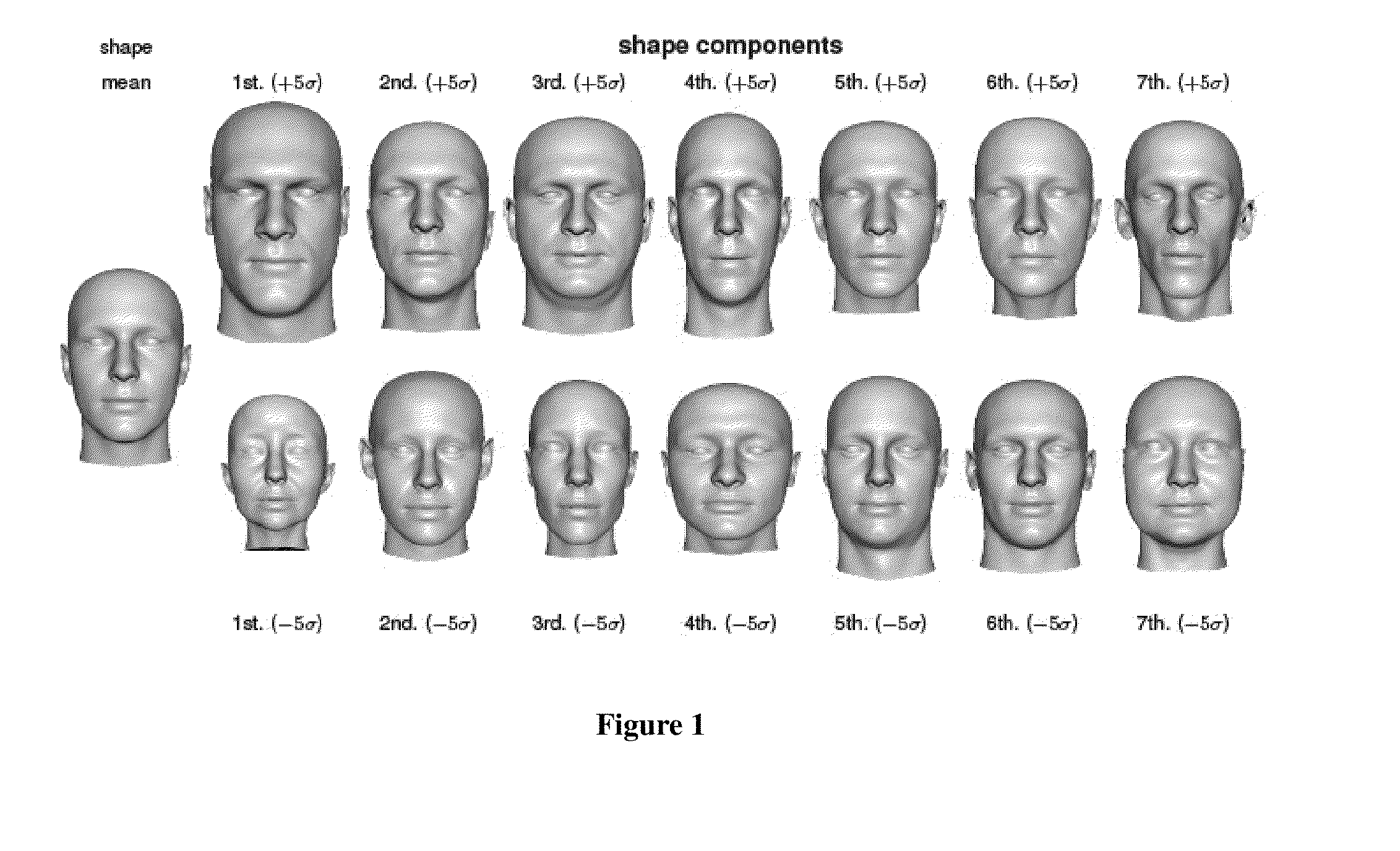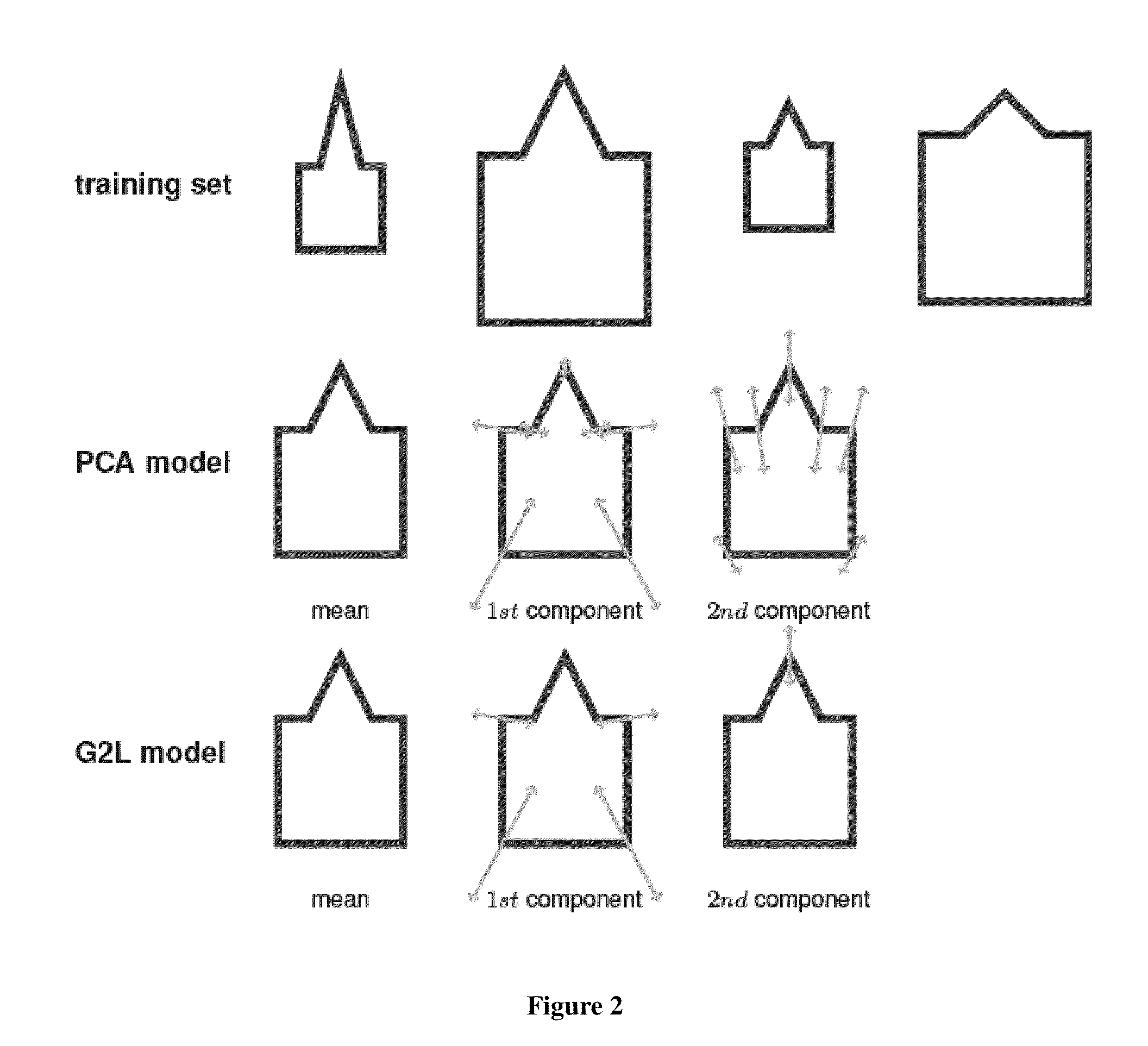Modeling methods and systems
- Summary
- Abstract
- Description
- Claims
- Application Information
AI Technical Summary
Benefits of technology
Problems solved by technology
Method used
Image
Examples
Embodiment Construction
[0017]Generally speaking, the present invention is directed to methods and / or systems (including, for example, component hardware) for modeling and / or processing and / or manipulating and / or recognizing 3-dimensional (3D) objects (for example, human faces). Such methods and / or systems may be, and in some cases are, embodied by or comprised in part of computer readable code written or stored on computer readable media (e.g., external hard drives or other memory devices) or otherwise in computers (e.g., internal hard drives or flash memories) which, as containing or embodying or utilizing such code corresponding to executable instructions, function in unique ways to achieve unique results by (or when) executing instructions corresponding to such code. Some non-limiting embodiments, moreover, may employ scanners or cameras as well as image display devices and the like.
[0018]In certain example embodiments, a method and / or system for modeling a 3D object by combining global and local model...
PUM
 Login to View More
Login to View More Abstract
Description
Claims
Application Information
 Login to View More
Login to View More - R&D
- Intellectual Property
- Life Sciences
- Materials
- Tech Scout
- Unparalleled Data Quality
- Higher Quality Content
- 60% Fewer Hallucinations
Browse by: Latest US Patents, China's latest patents, Technical Efficacy Thesaurus, Application Domain, Technology Topic, Popular Technical Reports.
© 2025 PatSnap. All rights reserved.Legal|Privacy policy|Modern Slavery Act Transparency Statement|Sitemap|About US| Contact US: help@patsnap.com



